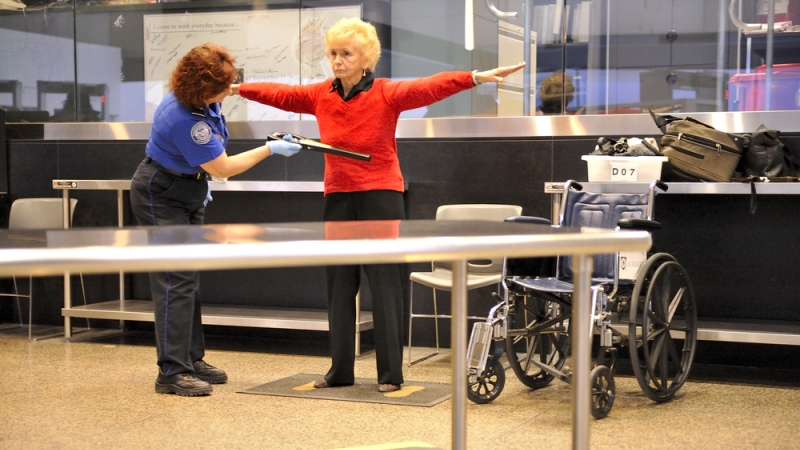
The Transportation Security Administration (TSA) is looking to improve its customers’ experiences by adding machine learning tools to screening technologies at airport checkpoints nationwide.
According to a request for information (RFI) published last week, TSA is conducting market research to better understand what technologies are available to provide enhanced solutions for on-person screening (OPS) and identity management screening systems at security checkpoints.
Specifically, the April 21 RFI is looking for automated tools that will improve TSA’s advanced imaging technology (AIT) and walk-through metal detector (WTMD) systems, as well as its credential authentication technology (CAT) systems.
Currently, TSA says that the AIT and WTMD systems “require divestiture of a person’s outwear prior to being screened. Similarly, when an individual triggers an alarm during screening, a patdown typically is required to resolve the alarm, which is uncomfortable to many individuals. These requirements increase the time required to screen that passenger and often increase passenger wait times.”
The agency is looking to establish the next generation of OPS solutions with a focus on moving passengers through the checkpoint in a continuous manner, enhancing threat detection capabilities and reducing contact between passengers and TSA officers, standardizing image display, and enabling operational connectivity through secure data transmission.
Currently, TSA’s screening technology requires passengers to remove outerwear and stop and pose while in the machine. The agency wants to improve flyers’ experience by enabling screening technology that does not require the removal of light outerwear or personal items – like keys and wallets – from pockets. TSA also wants the automated tech to screen 150-360 passengers per hour.
The RFI states that the automated detection algorithms must have the ability to identify the full list of threats and specific materials, like ceramics, plastics, paper, leather, carbon fiber, and potential explosive material.
Finally, the agency is requesting that OPS technology solutions operate on an open architecture system. TSA’s Chief Information Officer (CIO), Yemi Oshinnaiye, recently told MeriTalk in an exclusive interview that he’s excited about the open architecture project because it allows multiple vendors to work on different parts of the same technology.
“Let’s have a company work on algorithms, so they can work faster, stronger, and we have better detection on prohibited items – any weapons that might be there – and let’s have the other company work on the machine part of it,” the CIO said. “We can have less things to work on, and you have more intense research on it, you’ll have better products coming together, and then they’re integrated. Open architecture is going to allow us to do a lot of really cool things [and] keep us safe.”
For the CAT systems, TSA officials are seeking more information on automating the technology for physical and digital ID scanning. The RFI explains that automating this part of the security checkpoint will allow the agency to allocate staff to other tasks.
AutoCAT will take a live photo of a passenger and compare it with their ID, and once verified, an e-gate will open and allow the traveler to proceed to screening. One TSA officer will be able to staff multiple security gates simultaneously, the RFI says.
Interested stakeholders have until 3 p.m. EST on May 5 to respond.
